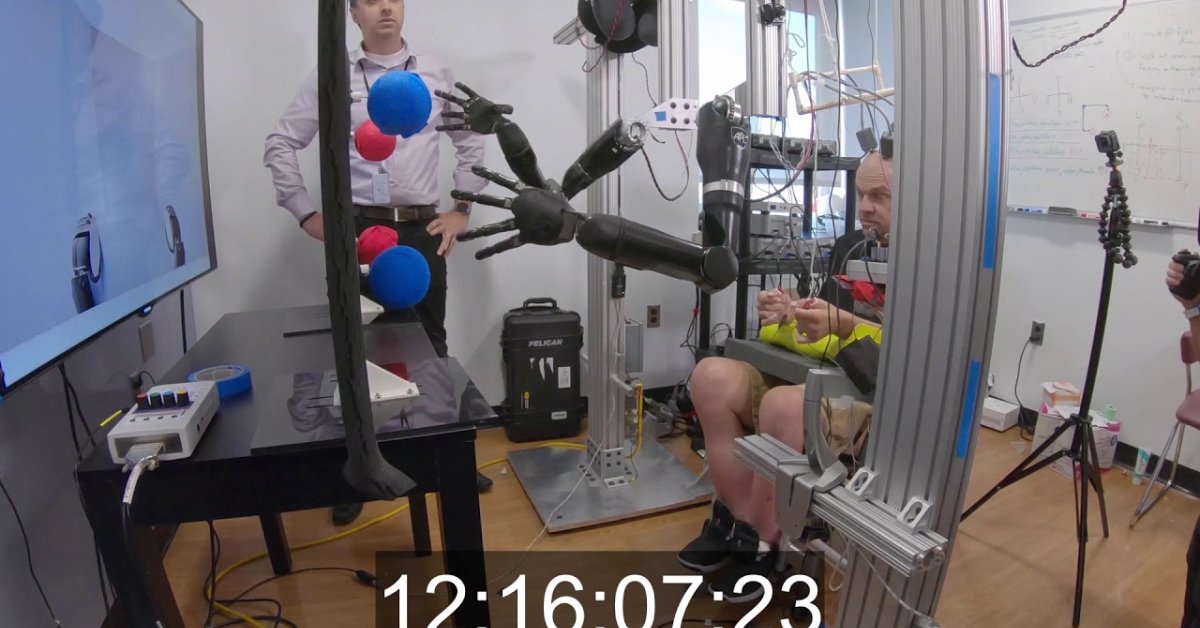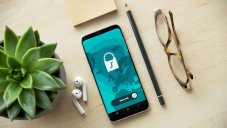New Brain Implant Allows Injured People To Control Two Prosthetic Arms At The Same Time
Dhir Acharya - Dec 16, 2020

The research team implanted 6 electrodes into the patient's brain in a 10-hour surgical procedure, letting him control two prosthetic arms at the same time.
- New ‘Deep Nostalgia’ AI Allow Users To Bring Old Photos To Life
- This Dragonfly Plane Eliminates The Disadvantage Of Current Aircraft
- Pilots Passed Out Mid-Flight, AI Software Got The Aircraft Back Up Automatically
A quadriplegic man could control two prosthetic arms at the same time thanks to the help of the technology developed by scientists from John Hopkins University. This is believed to be the first case in the medical field.
In collaboration, the John Hopkins University Applied Physics Laboratory (APL) and the John Hopkins Medicine (JHM) implanted 6 electrodes into Robert Chmielewski’s brain in a 10-hour surgical procedure. As a result, Chmielewski’s sensation in his hands was improved and he was able to operate his prosthetic arms with his mind, according to the press release from the John Hopkins Medicine.

Over the last 30 years, Chmielewski has been paralyzed after a surfing accident that left him with minimal movement in the extremities. Now that APL has collaborated with JHM for nearly two years, Chmielewski can use both of his robotic arms to do simple tasks like feeding himself.
A member of the team, Pablo Celnik said:
“This type of research, known as brain-computer interface (BCI), has, for the most part, focused on only one arm, controlled from only one side of the brain.”
At the same time, Gabriela Cantarero, another member of the research team added:
“Simultaneous brain-machine interface control of two limbs is a particular challenge because it’s not a simple 1+1 summation of what the left arm is doing plus what the right arm is doing in the brain, but more like trying to calculate the sum of the two arms as 1 plus 1 equals 3.8.”

The technology relies on a system that uses AI to automate part of the robotic control. The research team aimed at combining brain-computer interface signals with AI and robotics to let the user focus on details like which object to lift up or where to cut when they eat. Meanwhile, AI would take control as soon as the user made the decision.
The next step is to expand the types and number of daily activities that this technology can enable and to provide users with more sensory feedback when tasks are performed. This means users won’t have to look to know if they are succeeding, just like uninjured people can feel as they are tying their shoelaces without looking.
Featured Stories

Features - Jul 01, 2025
What Are The Fastest Passenger Vehicles Ever Created?

Features - Jun 25, 2025
Japan Hydrogen Breakthrough: Scientists Crack the Clean Energy Code with...

ICT News - Jun 25, 2025
AI Intimidation Tactics: CEOs Turn Flawed Technology Into Employee Fear Machine

Review - Jun 25, 2025
Windows 11 Problems: Is Microsoft's "Best" OS Actually Getting Worse?

Features - Jun 22, 2025
Telegram Founder Pavel Durov Plans to Split $14 Billion Fortune Among 106 Children

ICT News - Jun 22, 2025
Neuralink Telepathy Chip Enables Quadriplegic Rob Greiner to Control Games with...

Features - Jun 21, 2025
This Over $100 Bottle Has Nothing But Fresh Air Inside

Features - Jun 18, 2025
Best Mobile VPN Apps for Gaming 2025: Complete Guide

Features - Jun 18, 2025
A Math Formula Tells Us How Long Everything Will Live

Features - Jun 16, 2025
Comments
Sort by Newest | Popular